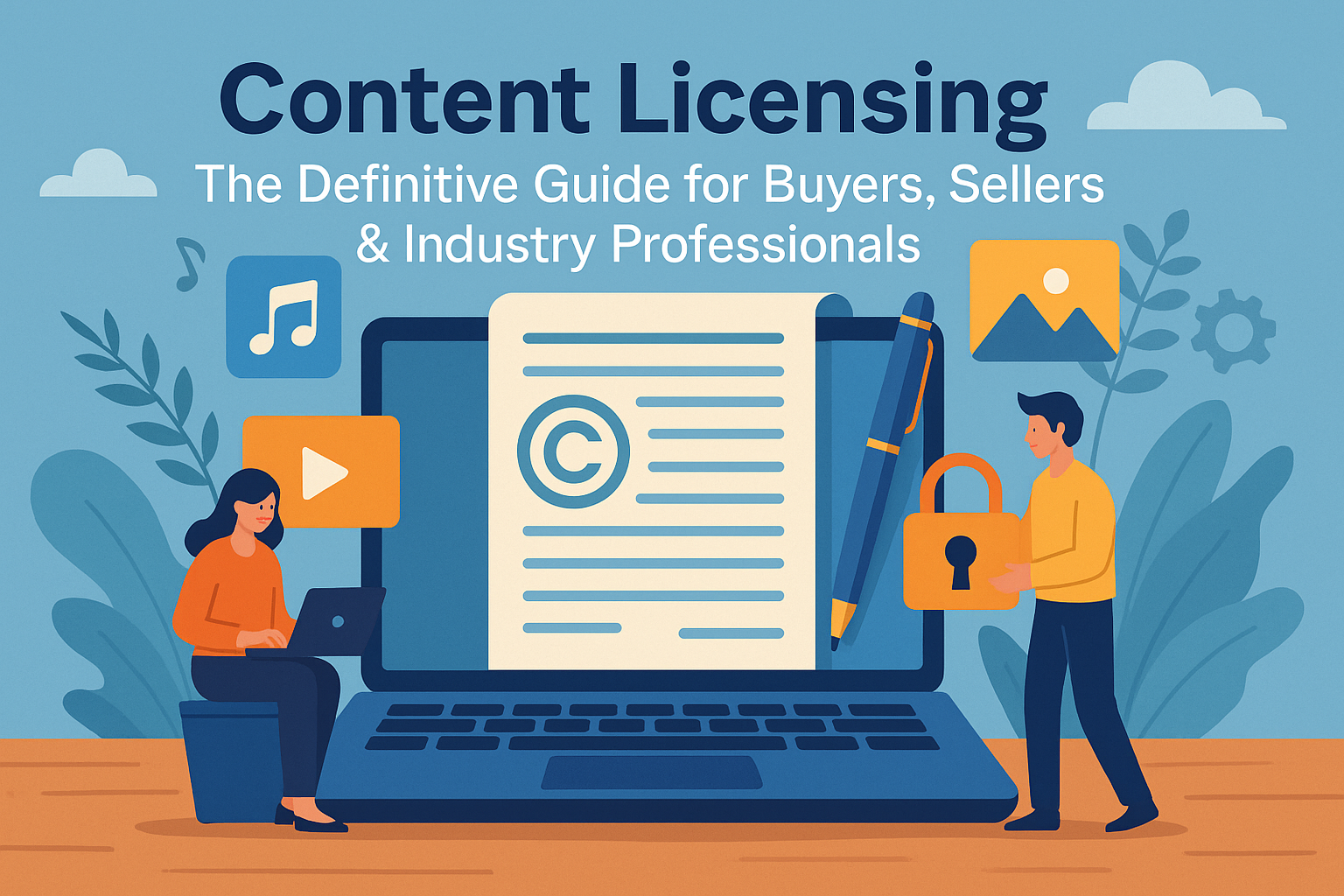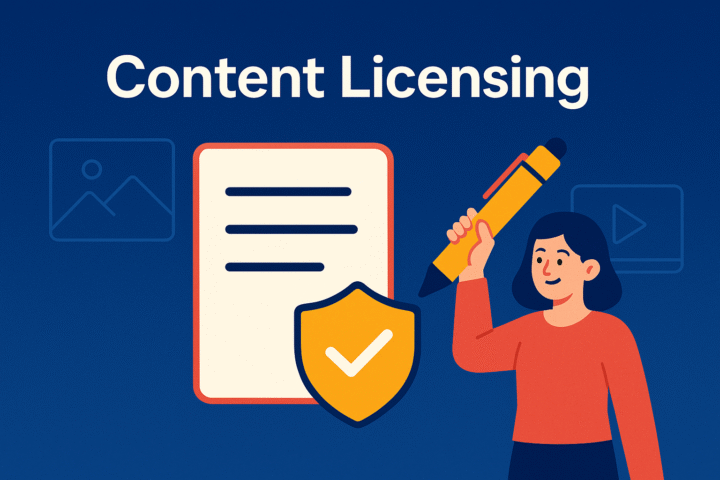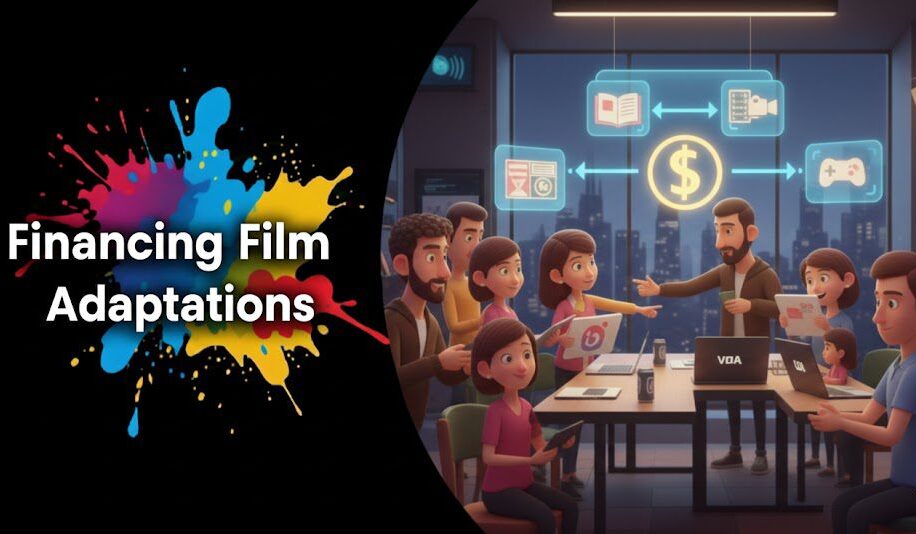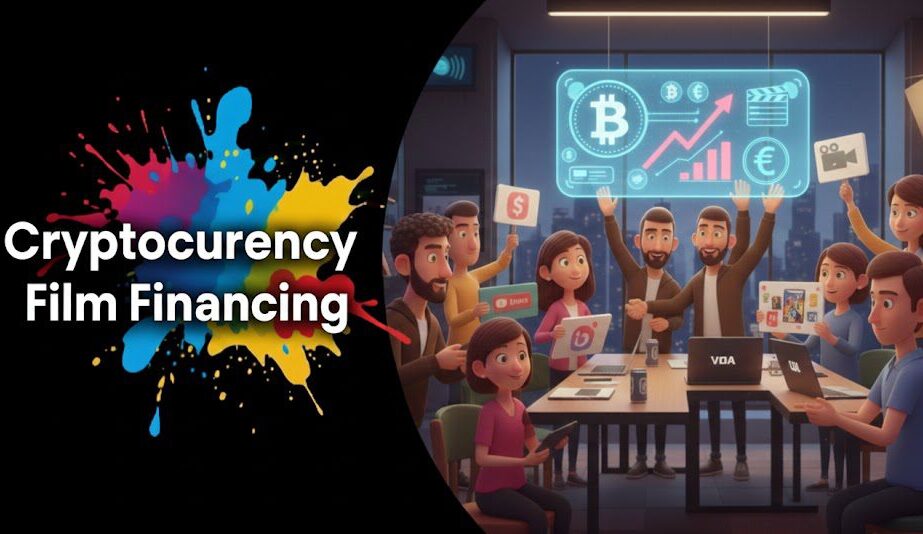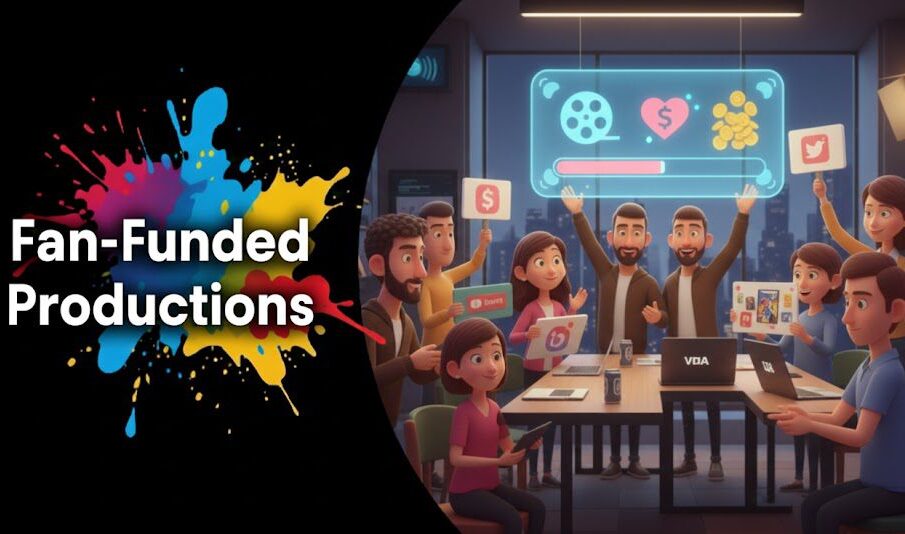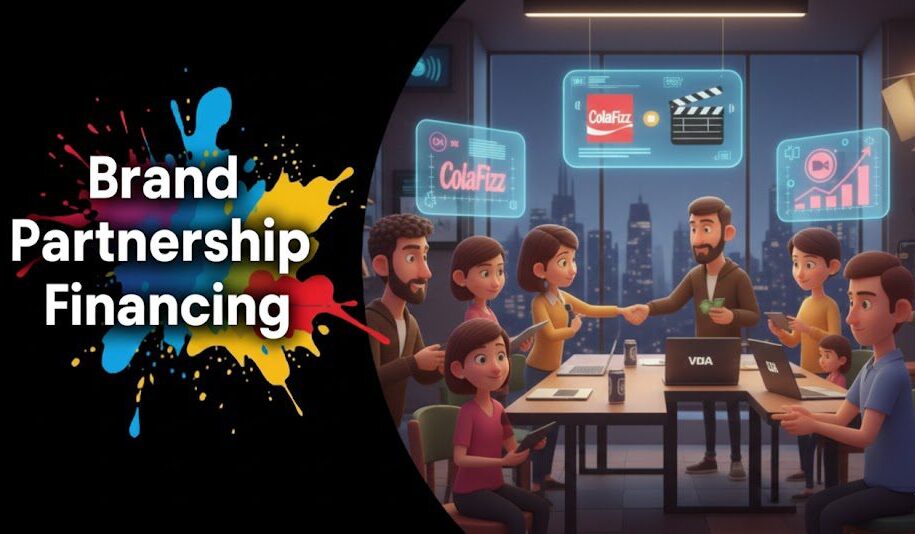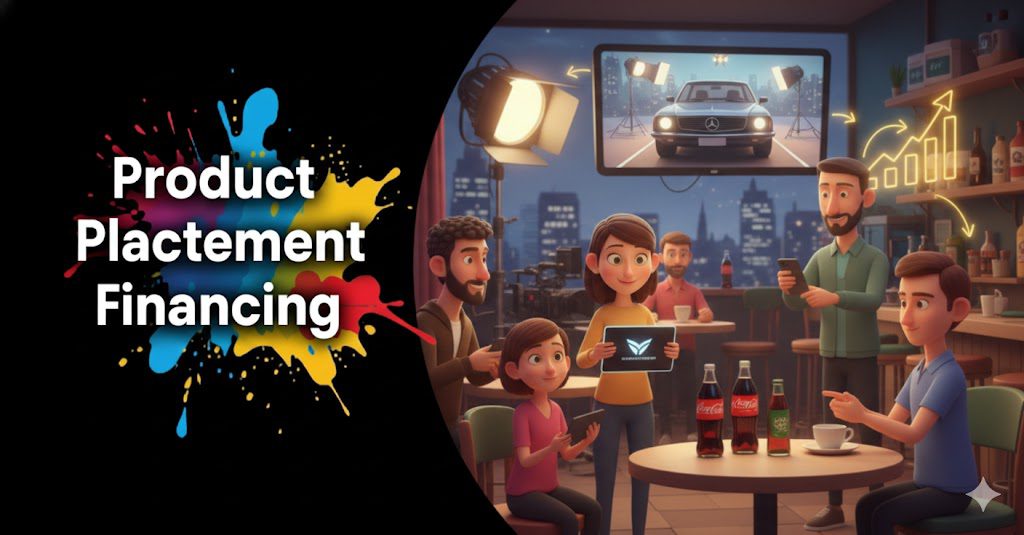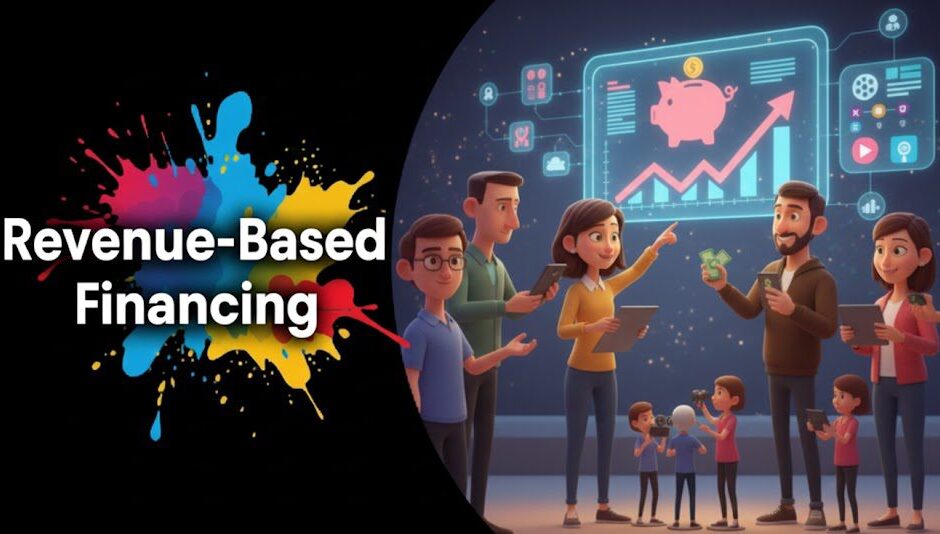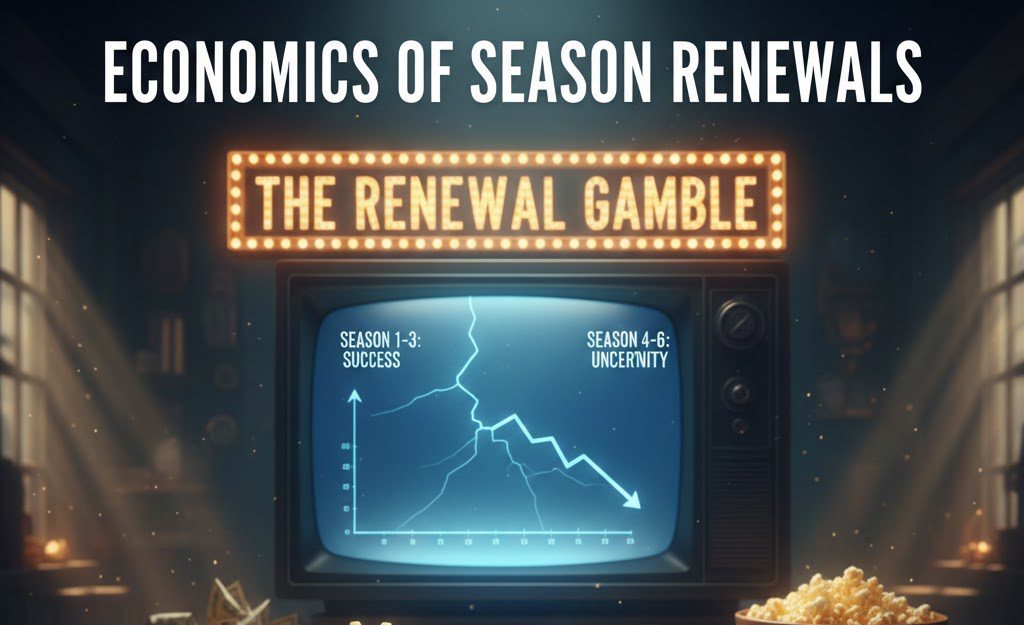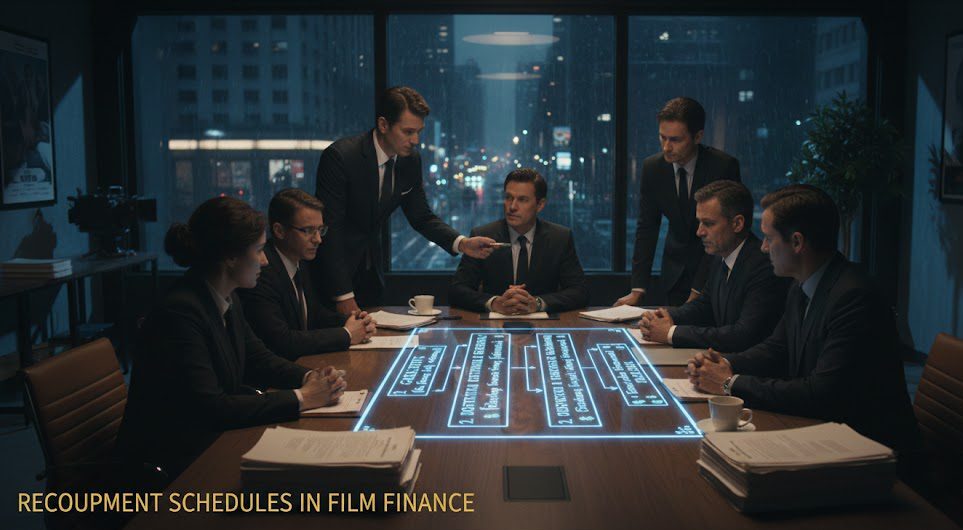Introduction
Welcome to the ever-evolving world of media and entertainment! At the heart of this dynamic industry lies Content Licensing, a critical process that fuels distribution, viewership, and revenue generation across the globe. Whether you’re a seasoned industry professional, a content creator looking to maximize your reach, a buyer seeking the next big hit for your platform, or simply curious about how your favorite shows and movies land on your screen, this guide is for you.
In 2025, understanding the ins and outs of Content Licensing is more important than ever. We’ll explore everything from the fundamental definitions and intricate processes to legal frameworks, rights management, financial models, and the exciting future trends shaping this field. Get ready to dive deep into the mechanisms that power the global content ecosystem.
Table of content
- Introduction
- Key-Takeaways
- What is Content Licensing? Understanding the Basics
- The Content Licensing Process: A Journey for Buyers and Sellers
- Navigating the Legal Maze: Content Licensing Agreements
- Mastering Content Rights: Territories, Windows, and Platforms
- The Money Trail: Content Licensing Revenue Models and Pricing
- A Buyer’s Guide to Strategic Content Acquisition
- A Seller’s Playbook for Maximizing Content Value
- Spotlight on Film & TV Content Licensing
- The Future of Content Licensing: Trends and Transformations
- How Vitrina AI is Shaping Modern Content Licensing
- Conclusion
- FAQs
Key Takeaways
| Area of Content Licensing | Core Insight |
|---|---|
| Fundamentals | Content Licensing is the granting of permission by a rights holder to a third party to use, distribute, or exhibit content under specific terms. |
| The Process | Involves discovery, negotiation, agreement, delivery, and ongoing management for both buyers and sellers. |
| Legal Agreements | Contracts are complex, detailing rights, territories, windows, fees, and usage limitations. Clear understanding is vital. |
| Rights Management | Effective management of territories, exclusivity, platforms (SVOD, AVOD, TV), and windows is key to maximizing value. |
| Financial Models | Revenue can be generated through flat fees, royalty-based models, minimum guarantees, and hybrid structures. |
| Buyer Perspective | Strategic acquisition involves identifying target audience needs, sourcing appropriate content, and negotiating favorable terms. |
| Seller Perspective | Maximizing content value requires understanding market demand, pricing strategically, and reaching global buyers. |
| Industry Trends | AI, new streaming models, globalization, and evolving viewer habits are reshaping the future of Content Licensing. |
| Vitrina’s Role | Platforms like Vitrina are revolutionizing how buyers and sellers connect and transact in the content marketplace. |
Ready to Maximize Your Content's Global Reach & Revenue?

What is Content Licensing? Understanding the Basics
At its core, Content Licensing is a legal agreement where a content owner (the licensor) grants another party (the licensee) the rights to use, distribute, exhibit, or broadcast their creative work. This “content” can be anything from feature films, TV series, documentaries, and short films to music, games, and even articles. Think of it like renting a property; the owner still holds the title, but someone else pays for the right to use it for a specific period, in specific places, and often for specific purposes. This process is fundamental to how media travels around the world, reaching diverse audiences on various platforms. Without Content Licensing, your favorite international series might never appear on your local streaming service, and filmmakers would struggle to recoup their investments and fund new projects.
Why is Content Licensing important in the media industry?
Content Licensing is the lifeblood of the media and entertainment industry. For content creators and owners, it’s a primary way to monetize their assets beyond their initial release, generating revenue from different territories and platforms over time. For broadcasters, streaming services, and distributors (the buyers), it’s the way they acquire a diverse library of content to attract and retain audiences, fill programming schedules, and compete in a crowded marketplace. It fosters a global exchange of stories and ideas, enabling cultural diversity in media consumption. Furthermore, it supports the entire ecosystem by funding new productions and creating jobs.
Who are the key players involved in a content licensing deal?
Several key players are typically involved:
- Licensor (Seller/Rights Holder): The owner of the content rights. This could be a production company, a film studio, an independent filmmaker, or a distribution company that holds the rights for specific territories.
- Licensee (Buyer/Acquirer): The party seeking to acquire the rights to use the content. This could be a TV network, a streaming platform (like Netflix or Hulu), a theatrical distributor, an airline for in-flight entertainment, or an educational institution.
- Distributors/Sales Agents: Often act as intermediaries, representing licensors to find suitable licensees and negotiate deals, especially in international markets.
- Legal Teams/Business Affairs: Professionals on both sides who draft, review, and negotiate the licensing agreements.
Sometimes, aggregators or specialized marketplaces also facilitate these connections.
What are the different types of content that can be licensed?
A wide array of content types are subject to licensing:
- Feature Films: From blockbuster movies to independent cinema.
- Television Series: Scripted dramas, comedies, docu-series, reality shows, etc.
- Documentaries: Both feature-length and episodic.
- Animated Content: Kids’ shows, animated features, anime.
- Short Films: Often licensed for anthologies, educational purposes, or specific platforms.
- Archival Footage/Stock Media: Clips used within other productions.
- Music: For use in film, TV, commercials (synchronization licenses).
- Video Games: Licensing of game content or IP for other media, or vice-versa.
Each content type can have unique considerations within the Content Licensing framework.
| Player Type | Role in Licensing | Primary Goal |
|---|---|---|
| Licensor (Seller) | Grants rights to content | Maximize content revenue and reach |
| Licensee (Buyer) | Acquires rights to content | Attract and retain audience, fill programming needs |
| Distributor/Sales Agent | Intermediary connecting sellers with buyers | Facilitate deals and expand market access |
The Content Licensing Process: A Journey for Buyers and Sellers
The journey of Content Licensing from initial discovery to final exhibition is a multi-step process that requires careful navigation by both buyers and sellers. While the specifics can vary based on the content type, deal complexity, and parties involved, a general workflow underpins most transactions. Understanding this lifecycle is crucial for efficient and successful deal-making. It’s about finding the right match, negotiating fair terms, ensuring legal compliance, and managing the content effectively throughout its licensed life. This process is becoming increasingly streamlined by modern solutions, including platforms like Vitrina, which help connect parties and facilitate discovery.
What are the typical stages from discovery to deal closure?
The typical stages include:
- Content Discovery/Sourcing: Buyers identify potential content through markets (e.g., MIPCOM, Cannes Film Market), distributors, online marketplaces, or direct outreach. Sellers showcase their catalogs.
- Evaluation & Screening: Buyers screen content to assess its suitability for their audience, quality, and brand alignment.
- Initial Offer & Negotiation (Term Sheet): If interested, the buyer makes an offer, often starting with a term sheet outlining key conditions like rights, territory, license fee, and duration. Negotiations follow.
- Due Diligence: Both parties verify necessary information, such as chain of title (proof of ownership) for sellers and financial viability for buyers.
- Agreement Drafting & Finalization: Lawyers draft the formal licensing agreement detailing all terms. This is often the most time-consuming phase.
- Deal Closure & Signature: Once both parties agree, the contract is signed.
- Content Delivery & Servicing: The licensor delivers the content materials (e.g., master files, marketing assets) as specified in the agreement.
- Payment & Reporting: The licensee makes payments as per the agreed schedule, and the licensor may require performance reports.
How do content markets and festivals play a role?
Content markets and film/TV festivals are vital hubs for Content Licensing. Events like MIPTV, MIPCOM, Berlinale European Film Market (EFM), Cannes Film Market (Marché du Film), and the American Film Market (AFM) provide a physical (and increasingly virtual) space for:
- Networking: Buyers and sellers connect and build relationships.
- Screenings: New films and TV shows are showcased to potential buyers.
- Deal-Making: A significant number of licensing deals are initiated or closed at these events.
- Trend Spotting: Professionals gain insights into market demands and emerging content.
They are intensive periods of buying, selling, and industry collaboration.
What are common challenges faced during the licensing process?
Challenges can arise at various stages:
- Discoverability: Buyers finding the right content, and sellers reaching the right buyers, especially for niche or independent content.
- Valuation & Pricing: Agreeing on a fair license fee can be difficult.
- Complex Negotiations: Hammering out specific terms related to rights, windows, and exclusivity can be lengthy.
- Legal Hurdles: Ensuring clear chain of title and resolving IP issues.
- Technical Delivery: Meeting diverse technical specifications for different platforms.
- Rights Tracking & Management: Keeping track of multiple licenses across various territories and windows.
Modern platforms and experienced professionals help mitigate these challenges.
| Process Stage | Key Activity | Potential Challenge |
|---|---|---|
| Discovery | Buyers finding content, sellers marketing content | Matching supply with demand effectively |
| Negotiation | Agreeing on terms (rights, fees, duration) | Reaching mutually acceptable terms |
| Agreement | Drafting and finalizing legal contract | Complexity of clauses, ensuring clarity |
| Delivery & Management | Transferring materials, tracking usage | Technical issues, rights conflicts |
Navigating the Legal Maze: Content Licensing Agreements
The cornerstone of any Content Licensing transaction is the licensing agreement. This legally binding document outlines the precise terms and conditions under which the content can be used. It’s often a complex document, meticulously drafted to protect the interests of both the licensor and the licensee. Understanding the key clauses, negotiation points, and potential pitfalls within these agreements is crucial for anyone involved in buying or selling content rights. A poorly understood or ambiguously worded contract can lead to disputes, financial losses, and damaged relationships. Therefore, expert legal counsel is almost always indispensable.
What are the essential clauses in a typical content licensing agreement?
While agreements vary, essential clauses typically include:
- Identification of Parties: Clearly naming the licensor and licensee.
- Definition of Content: Precisely describing the film, TV series, or other media being licensed (e.g., title, episodes, duration).
- Grant of Rights: Specifying the exact rights being granted (e.g., broadcast, SVOD, AVOD, theatrical).
- Territory: Defining the geographical area(s) where the content can be exploited.
- License Term (Duration): Stating the length of time the license is valid.
- License Fee & Payment Terms: Outlining the amount, currency, and schedule of payments.
- Exclusivity/Non-Exclusivity: Specifying whether the rights granted are exclusive to the licensee in that territory/window or non-exclusive.
- Delivery Specifications: Detailing the technical format and method of content delivery.
- Marketing & Promotion: Outlining each party’s responsibilities for promoting the content.
- Warranties & Indemnities: Statements by each party regarding their rights and responsibilities, and protection against third-party claims (e.g., copyright infringement).
- Termination Clause: Conditions under which the agreement can be ended.
- Governing Law & Dispute Resolution: Specifying the jurisdiction whose laws will apply and how disputes will be handled.
How are intellectual property (IP) rights protected and managed?
Intellectual Property (primarily copyright) is the foundation of Content Licensing. The agreement must clearly state that the licensor owns or has secured all necessary rights (including music, underlying literary works, actor performances – known as the “chain of title”) to grant the license. Licensees, in turn, are granted specific IP rights for a limited scope. Key protection mechanisms include:
- Copyright Notices: Ensuring proper copyright attribution.
- Usage Restrictions: Clearly defining what the licensee can and cannot do with the content.
- Anti-Piracy Measures: Often, agreements will include clauses about cooperation in combating piracy.
- Territorial Restrictions: Enforcing these is crucial for IP protection and maximizing value across different markets.
Diligent IP management prevents unauthorized use and ensures compliance.
What are common negotiation points and potential pitfalls?
Negotiation is a critical phase. Common points of contention include:
- License Fees: The most obvious point; balancing fair value for the seller with affordability for the buyer.
- Scope of Rights: Buyers often want broader rights, while sellers prefer to grant narrower, more specific rights to retain flexibility.
- Exclusivity: Exclusive deals command higher fees but limit the licensor’s options.
- Payment Schedules: Timing of advances, guarantees, and royalty payments.
- Holdbacks & Windows: Defining periods during which content cannot be exploited on other platforms or in other territories.
Potential pitfalls include ambiguous language leading to misinterpretations, failure to secure all underlying rights (chain of title issues), and unrealistic expectations from either party.
| Agreement Aspect | Key Consideration | Importance |
|---|---|---|
| Grant of Rights | Specificity of what rights are being transferred (e.g., SVOD, TVOD, linear). | Defines exactly how the content can be used. |
| Territory & Term | Geographical scope and duration of the license. | Crucial for market strategy and revenue potential. |
| License Fee & Payment | Financial compensation and payment structure. | Core economic basis of the deal. |
| Warranties & Indemnities | Legal assurances regarding ownership and non-infringement. | Mitigates legal risks for both parties. |
Want to Stay Ahead in the Evolving Content Marketplace?

Mastering Content Rights: Territories, Windows, and Platforms
Effective Content Rights Management is at the heart of maximizing the value and reach of any media asset. It involves the strategic handling of various dimensions of a license, including where the content can be shown (territories), when it can be shown (windows), on what types of services (platforms), and whether those rights are exclusive. Navigating this complex matrix allows rights holders to carve out multiple revenue streams from a single piece of content and enables buyers to secure content that aligns with their specific audience and platform strategy. In an increasingly fragmented media landscape, sophisticated rights management is no longer a luxury but a necessity for success in Content Licensing.
How are territorial rights defined and managed in global licensing?
Territorial rights define the specific geographic regions where a licensee is permitted to exploit the content. These can range from a single country (e.g., “France only”) to a group of countries (e.g., “German-speaking Europe”), a continent (e.g., “Latin America”), or even global rights (though these are less common for exclusive deals and command very high fees). Rights holders often license content territory by territory to maximize overall revenue, as different markets may have different values for the same content. Managing these diverse territorial deals requires careful tracking to avoid overlaps and ensure compliance. Geo-blocking technology is often used by platforms to enforce these territorial restrictions for digital distribution.
What are licensing windows, and how do they impact distribution strategy?
Licensing windows refer to the specific periods during which a licensee can exhibit the content. The traditional distribution model for films, for example, involved a sequence of windows:
- Theatrical Release
- Home Entertainment (DVD/Blu-ray, Premium VOD)
- Pay Television (Premium Cable/Satellite)
- Broadcast Television (Free-to-Air)
- Subscription Video-on-Demand (SVOD)
These windows are designed to maximize revenue at each stage by granting exclusivity for a certain period. However, with the rise of streaming and changing viewer habits, these windows are becoming more flexible and sometimes compressed or even simultaneous (e.g., day-and-date releases). Strategic windowing is crucial for effective Content Licensing and monetization.
How do exclusivity and platform rights (SVOD, AVOD, TVOD, TV) differ?
Exclusivity means that the licensee is the only one allowed to exploit the specified rights within the defined territory and window. This is highly valuable and commands higher fees. Non-exclusive rights allow the licensor to grant similar rights to multiple licensees in the same territory/window.
Platform rights define the type of service on which the content can be offered:
- SVOD (Subscription Video-on-Demand): Platforms like Netflix, Disney+, where users pay a recurring fee for access to a library of content.
- AVOD (Advertising-supported Video-on-Demand): Platforms like Tubi, Pluto TV, where content is free to watch but includes advertisements.
- TVOD (Transactional Video-on-Demand): Services like Apple iTunes or Amazon Prime Video Store, where users pay a one-time fee to rent or buy a specific piece of content.
- Linear TV: Traditional scheduled television broadcasting (free-to-air or pay TV channels).
- Other platforms can include theatrical, in-flight entertainment, educational, etc.
A single piece of content can be licensed for different platforms, often in different windows and with varying exclusivity terms, as part of a comprehensive Content Licensing strategy.
| Right Type | Definition | Strategic Implication |
|---|---|---|
| Territorial Rights | Geographic area of exploitation. | Allows market-specific monetization. |
| Licensing Windows | Specific time periods for exhibition. | Maximizes revenue across different release stages. |
| Exclusivity | Sole right to exploit in a given territory/window. | Higher value for licensee, limits licensor. |
| Platform Rights (SVOD, AVOD, etc.) | Type of service content can be on. | Targets specific audience consumption patterns. |
The Money Trail: Content Licensing Revenue Models and Pricing
The financial dimension of Content Licensing is, naturally, a critical component for both buyers and sellers. Determining the right price for content and structuring a deal that is financially viable and equitable involves understanding various revenue models and pricing strategies. Factors such as the content’s popularity, an actor’s star power, production quality, uniqueness, the scope of rights granted, territory value, and prevailing market conditions all influence how deals are structured and priced. A solid grasp of these financial aspects is essential for navigating the economics of the media industry and achieving sustainable success through Content Licensing.
What are common revenue models in content licensing (e.g., flat fee, royalty, MG)?
Several revenue models are used:
- Flat Fee (License Fee): The licensee pays a fixed sum for the rights to use the content for the agreed term and territory, regardless of how well the content performs. This is common for library content or when performance is hard to track.
- Royalty-Based: The licensee pays the licensor a percentage of the revenue generated from the content (e.g., a share of subscription revenue attributed to the content, or a percentage of advertising revenue for AVOD).
- Minimum Guarantee (MG): The licensee pays an upfront fixed amount (the MG) which is often recoupable against future royalties. If royalties exceed the MG, the licensor receives additional payments. This model shares risk and reward.
- Revenue Share: Similar to royalty, but can be structured in various ways, often seen in TVOD or channel distribution deals.
- Hybrid Models: Combinations of the above, such as a lower flat fee plus a revenue share kicker if performance targets are met.
The choice of model depends on the content, platform, and negotiating power of the parties.
How is content valued and priced for licensing deals?
Valuing content is more of an art than a science, but several factors are considered:
- Past Performance: Box office results, TV ratings, streaming viewership data for similar content or previous seasons.
- Production Quality & Talent: Budgets, production values, star power of cast and director.
- Genre & Audience Appeal: Popularity of the genre, suitability for the target platform’s audience.
- Uniqueness & Exclusivity: How rare or in-demand the content is, and whether exclusive rights are sought.
- Scope of Rights: The number of platforms, length of the license term, and size/value of the territory.
- Market Comparables (“Comps”): What similar content has licensed for in similar deals.
- Age of Content: Newer content typically commands higher prices than older library titles, though classics can still be valuable.
Negotiation ultimately determines the final price.
What are the financial risks and rewards for licensors and licensees?
For Licensors (Sellers):
- Rewards: Generating revenue beyond initial exploitation, expanding global reach, building brand value. With royalty/MG deals, potential for significant upside if content performs well.
- Risks: Content underperforming (especially if relying on royalties), piracy eroding value, licensee insolvency, granting overly broad rights for too little money.
For Licensees (Buyers):
- Rewards: Acquiring attractive content to grow audience and revenue, differentiating their platform, fulfilling programming needs.
- Risks: Overpaying for content that doesn’t perform as expected, content not resonating with their audience, technical issues with delivery, changes in market demand making the content less valuable.
Careful due diligence and well-structured deals help mitigate these risks in Content Licensing.
| Revenue Model | Description | Typical Use Case |
|---|---|---|
| Flat Fee | Fixed payment for rights. | Library content, smaller platforms, predictable cost for buyer. |
| Royalty-Based | Percentage of revenue generated. | SVOD, AVOD, situations where performance can be tracked. |
| Minimum Guarantee (MG) | Upfront payment recoupable against royalties. | Higher-value content, shares risk/reward between parties. |
A Buyer’s Guide to Strategic Content Acquisition
For content buyers – whether you’re programming for a TV network, curating for a streaming service, or distributing films theatrically – strategic acquisition is paramount. It’s about more than just filling slots; it’s about understanding your audience deeply, identifying content that resonates, and negotiating deals that make financial and strategic sense. The world of Content Licensing offers a vast ocean of possibilities, but navigating it effectively requires a clear strategy, robust evaluation processes, and keen negotiation skills. The goal is to build a compelling content library that attracts viewers, drives subscriptions or ratings, and strengthens your brand position in the competitive media landscape.
How can buyers identify and source the right content for their platform/audience?
Effective sourcing involves:
- Audience Analysis: Deeply understanding the demographics, preferences, and viewing habits of your target audience. Data analytics play a key role here.
- Market Research: Staying informed about current trends, popular genres, emerging talent, and competitor activities.
- Attending Content Markets & Festivals: Actively participating in key industry events to discover new content and network with sellers.
- Utilizing Online Marketplaces & Discovery Platforms: Platforms like Vitrina offer tools to search, filter, and discover available content based on specific criteria, significantly streamlining the discovery process.
- Building Relationships: Cultivating strong relationships with distributors, sales agents, and production companies.
- Screening Widely: Dedicating resources to screen a large volume of potential acquisitions.
What are key considerations when evaluating content for licensing?
Beyond basic appeal, buyers should evaluate:
- Quality of Production: Technical aspects, storytelling, acting, and overall production values.
- Relevance & Uniqueness: How well does it fit the platform’s brand and programming strategy? Does it offer something unique or fill a gap in the current offering?
- Performance Potential: Using available data, comparable titles, and market insights to project potential viewership or engagement.
- Rights Availability & Cost: Are the desired rights available for the target territory and window, and is the asking price within budget and justified by potential ROI?
- Marketing Potential: Does the content have elements (e.g., well-known actors, strong concept, critical acclaim) that can be leveraged for promotion?
- Long-Term Value: For library deals, considering the content’s evergreen potential and re-watchability.
What are effective negotiation tactics for content buyers?
Buyers can strengthen their negotiating position by:
- Being Prepared: Thoroughly research the content, its potential value, and comparable deals. Know your budget and walk-away point.
- Clearly Defining Needs: Be specific about the rights, territories, and windows you require.
- Offering Creative Deal Structures: Propose financial models (e.g., MGs with revenue share) that align interests and potentially reduce upfront costs.
- Leveraging Volume: If acquiring multiple titles from one seller, negotiate package deals.
- Building Long-Term Relationships: Trust and good rapport with sellers can lead to more favorable terms over time.
- Understanding Seller Motivations: Sometimes factors beyond just the highest price (e.g., prestigious platform, marketing commitment) can influence a seller.
Successful Content Licensing for buyers is about finding that sweet spot between acquiring great content and securing a sustainable deal.
| Buyer Activity | Strategic Importance | Key Action |
|---|---|---|
| Audience Analysis | Ensures content resonates and engages viewers. | Utilize data, surveys, and feedback. |
| Content Evaluation | Assesses quality, fit, and performance potential. | Establish clear screening and assessment criteria. |
| Negotiation | Secures favorable terms and manages costs. | Prepare thoroughly, be clear on needs, explore creative deal structures. |
A Seller’s Playbook for Maximizing Content Value
For content creators, producers, and rights holders, selling or licensing your content is the pathway to reaching audiences and generating revenue. Maximizing the value of your film, TV show, or other media asset in the global Content Licensing marketplace requires a proactive and strategic approach. It’s about understanding your content’s unique appeal, identifying the right buyers and platforms, pricing it effectively, and skillfully negotiating deals that protect your interests while expanding your reach. In a world hungry for diverse content, sellers have significant opportunities, but success hinges on smart strategy and effective execution.
How can content sellers effectively market and pitch their content to potential buyers?
Effective marketing and pitching includes:
- Developing Strong Marketing Materials: High-quality screeners, trailers, synopses, key art, cast/crew bios, and any festival laurels or awards.
- Identifying Target Buyers: Researching platforms and broadcasters whose audience and programming strategy align with your content.
- Attending Content Markets & Festivals: Setting up meetings, participating in pitch sessions, and networking extensively.
- Utilizing Online Distribution Platforms & Marketplaces: Listing content on platforms like Vitrina to increase visibility to a global pool of buyers.
- Crafting a Compelling Pitch: Clearly articulating the unique selling propositions (USPs) of your content, its target audience, and its potential for success on the buyer’s platform.
- Networking & Building Relationships: Proactively connecting with acquisition executives, distributors, and sales agents.
What are key strategies for pricing content and structuring deals?
Sellers should consider:
- Understanding Market Value: Researching comparable sales, territory-specific demand, and platform payment capacities.
- Flexible Pricing Models: Being open to different deal structures (flat fee, MG, revenue share) depending on the buyer and market.
- Tiered Pricing: Offering different prices based on the scope of rights (e.g., exclusivity, window length, number of runs).
- Packaging Content: Offering bundles of titles (e.g., a library of films, multiple seasons of a series) can sometimes be attractive to buyers and increase overall deal value.
- Retaining Certain Rights: Strategically carving out rights (e.g., licensing SVOD to one buyer and TV rights to another in the same territory, if windows allow) to maximize revenue streams.
A well-thought-out pricing and rights strategy is crucial for successful Content Licensing.
How can sellers navigate international distribution and reach global audiences?
Reaching global audiences involves:
- Working with Experienced Sales Agents/Distributors: These partners often have established relationships with buyers in multiple territories and expertise in international deal-making.
- Adapting Content for International Markets: This may involve creating dubbed or subtitled versions, and ensuring marketing materials are culturally appropriate.
- Understanding Regional Preferences: Different types of content perform differently in various international markets.
- Leveraging Global Content Marketplaces: Using online platforms to showcase content to buyers worldwide.
- Attending International Markets: Prioritizing key global markets to meet international buyers.
A global mindset and partnerships are key to international Content Licensing success.
| Seller Activity | Strategic Importance | Key Action |
|---|---|---|
| Content Marketing | Increases visibility and attracts buyer interest. | Develop high-quality promotional materials, target outreach. |
| Pricing & Deal Structure | Maximizes revenue and aligns with market realities. | Research comps, be flexible, consider strategic rights carving. |
| International Distribution | Expands audience reach and revenue potential. | Partner with sales agents, adapt content, attend global markets. |
Spotlight on Film & TV Content Licensing
While Content Licensing principles apply across various media types, film and television content have their own unique dynamics, challenges, and opportunities within the licensing landscape. The lifecycle of a film or TV series often involves multiple licensing windows and a diverse array of potential buyers, from theatrical exhibitors and broadcasters to global streaming giants and niche VOD platforms. Understanding these specific nuances is crucial for professionals operating in these dominant sectors of the entertainment industry. The strategies for licensing a blockbuster movie will differ significantly from those for an independent documentary or a long-running TV series.
What are the unique aspects of licensing feature films versus TV series?
Feature Films:
- Often have a more defined traditional windowing sequence (theatrical, home video, pay TV, free TV, SVOD).
- Theatrical performance can heavily influence subsequent licensing values.
- Deal terms might involve box office bonuses or specific promotional commitments for theatrical releases.
- Shorter individual license terms are common for some windows.
TV Series:
- Often licensed season by season, or as complete series “box sets.”
- SVOD platforms are major buyers, frequently seeking exclusive multi-season rights.
- “Stacking rights” (allowing platforms to offer multiple previous seasons) are a key negotiation point.
- Format rights (the right to remake a series in another territory/language) are a significant ancillary revenue stream for successful shows.
- Binge-watching trends influence how series are valued and windowed on VOD platforms.
How does the licensing of scripted vs. unscripted content differ?
Scripted Content (Dramas, Comedies):
- Often involves higher production budgets and potentially higher licensing fees.
- Strong character development and serialized storytelling can drive long-term engagement and library value.
- International appeal can be very high for well-produced scripted shows.
- Remake/format rights are particularly valuable.
Unscripted Content (Reality, Documentary, Factual):
- Can have a wider range of production budgets.
- Timeliness can be a factor for topical documentaries.
- “Returnable formats” (reality shows that can be produced season after season) are highly sought after.
- Localization (e.g., creating local versions of a reality format) is a major aspect of its international Content Licensing.
- Documentaries often find homes on specialized platforms or with public broadcasters.
What are key trends in film and TV licensing today?
Current trends include:
- Dominance of Streaming Platforms: Global SVODs are investing heavily in acquiring and producing original content, driving up demand and prices for premium film and TV rights.
- Shorter Theatrical Windows: The exclusive theatrical window is shrinking, with some films moving to VOD or streaming much faster.
- Growth of AVOD & FAST Channels: Advertising-supported video-on-demand and Free Ad-supported Streaming TV channels are creating new licensing opportunities for library content.
- Increased Co-Productions & International Collaborations: Sharing costs and risks, and creating content with broader international appeal.
- Data-Driven Acquisitions: Platforms are increasingly using viewership data to inform their Content Licensing decisions.
- Focus on Niche Content: Growing demand for specialized content catering to specific audience interests.
The film and TV Content Licensing landscape is highly dynamic and responsive to changing technology and viewer behavior.
| Content Type | Key Licensing Factor | Current Trend |
|---|---|---|
| Feature Films | Theatrical windowing, home entertainment rights. | Shorter theatrical windows, rise of PVOD. |
| TV Series (Scripted) | Multi-season rights, SVOD exclusivity, format potential. | High demand from global streamers, binge-watching model. |
| TV Series (Unscripted) | Format viability, localization potential, topicality. | Growth in reality formats, demand for factual content on AVOD. |
The Future of Content Licensing: Trends and Transformations
The world of Content Licensing is in a constant state of flux, shaped by rapid technological advancements, evolving consumer habits, and the globalization of media. As we look ahead in 2025 and beyond, several key trends are poised to redefine how content is created, distributed, and monetized. From the increasing role of Artificial Intelligence and the rise of new digital platforms to the ever-growing demand for diverse global content, the future promises both exciting opportunities and new challenges for industry professionals. Staying ahead of these transformations is crucial for anyone involved in buying or selling content rights.
How is Artificial Intelligence (AI) impacting content discovery and deal-making?
AI is beginning to play a significant role:
- Enhanced Content Discovery: AI algorithms can analyze vast amounts of data (viewer preferences, content metadata, market trends) to help buyers identify content with high potential for their specific audiences. Platforms like Vitrina leverage AI for intelligent recommendations.
- Predictive Analytics for Valuation: AI models can assist in forecasting content performance and suggesting optimal pricing strategies.
- Automated Rights Management: AI tools can help track rights, manage availabilities, and identify potential licensing conflicts across complex catalogs.
- Streamlining Negotiations (Potential): While human negotiation remains key, AI could potentially assist in drafting initial term sheets or identifying standard clauses, speeding up parts of the legal process.
- Personalized Content Curation: AI helps platforms understand user behavior, influencing the type of content they license to cater to individual tastes.
What is the role of new platforms (e.g., Metaverse, NFTs) in future licensing models?
The impact of emerging platforms is still unfolding, but holds potential:
- Metaverse: Offers new avenues for experiential content licensing – virtual cinemas, interactive events, branded content experiences within virtual worlds. The legal and financial models for this are still being developed.
- NFTs (Non-Fungible Tokens): Explored for licensing unique digital collectibles related to content (e.g., digital art, iconic clips, virtual merchandise), creating new revenue streams and fan engagement models. NFTs could also potentially be used to represent fractional ownership or specific usage rights for content, though this is more experimental.
- Decentralized Content Platforms: Blockchain technology could potentially lead to new models for direct-to-consumer licensing and transparent royalty distribution, though widespread adoption is yet to be seen.
These platforms present new frontiers for Content Licensing that the industry is actively exploring.
How are globalization and evolving viewer habits shaping licensing strategies?
Globalization and viewer habits are profoundly impactful:
- Increased Demand for Global Content: Audiences are more open than ever to content from different countries and cultures (e.g., the success of K-dramas, Nordic noir). This creates more opportunities for international Content Licensing.
- Rise of Niche Audiences: Viewers seek content that caters to their specific interests, driving demand for specialized and diverse programming.
- On-Demand Consumption: The expectation for instant access anytime, anywhere (binge-watching) influences windowing strategies and the value of VOD rights.
- Multi-Screen Viewing: Content needs to be available and optimized for various devices, impacting technical delivery specifications in licensing deals.
- Shorter Attention Spans (Potentially): May influence the types of content licensed, with more focus on engaging, shorter-form content for some platforms.
Content licensing strategies must be agile and responsive to these global and behavioral shifts.
| Future Trend | Potential Impact on Licensing | Industry Adaptation |
|---|---|---|
| Artificial Intelligence (AI) | Improved discovery, valuation, rights management. | Integrating AI tools into workflows, data-driven decision making. |
| New Digital Platforms (Metaverse, NFTs) | New revenue streams, novel ways to engage audiences. | Experimenting with new licensing models, developing legal frameworks. |
| Globalization & Viewer Habits | Increased demand for diverse global content, on-demand access. | Focus on international co-productions, flexible windowing, niche content. |
How Vitrina AI is Shaping Modern Content Licensing
In today’s fast-paced and increasingly complex global media market, efficiency, data, and connections are paramount for successful Content Licensing. This is where modern B2B marketplaces and intelligence platforms like Vitrina are making a significant impact. By leveraging technology, particularly Artificial Intelligence, Vitrina helps to streamline traditional processes, enhance discoverability, and provide valuable insights for both content buyers and sellers. It’s about making the intricate world of global content acquisition and distribution more transparent, accessible, and data-driven.
For content buyers, Vitrina offers powerful tools for intelligent content discovery. Instead of sifting through countless catalogs or relying solely on traditional markets, buyers can use AI-powered search and recommendation engines to find content that precisely matches their audience needs, programming gaps, and strategic objectives. Detailed profiles of content, including metadata, rights availability, and performance indicators (where available), allow for quicker and more informed evaluation. This data-driven approach helps buyers make smarter acquisition decisions and optimize their content spend.
For content sellers, Vitrina provides a global platform to showcase their catalogs to a targeted audience of active buyers. It increases the visibility of their films, TV series, and other media assets, helping them reach markets and buyers they might not otherwise connect with. By providing insights into buyer demands and market trends, Vitrina can also help sellers position their content more effectively and identify new licensing opportunities. The platform aims to reduce friction in the deal-making process, making it easier for rights holders to monetize their content internationally. Ultimately, by fostering better connections and providing actionable intelligence, Vitrina is helping to shape a more efficient and dynamic future for Content Licensing.
| Vitrina AI Feature/Benefit | For Content Buyers | For Content Sellers |
|---|---|---|
| Intelligent Content Discovery | Find relevant content faster using AI-powered search & recommendations. | Increase visibility of catalog to targeted global buyers. |
| Data-Driven Insights | Make informed acquisition decisions based on market trends & content performance indicators. | Understand buyer demand & position content effectively. |
| Streamlined Connections | Easily connect with verified rights holders and distributors. | Access a global network of active content acquirers. |
| Market Transparency | Gain better understanding of rights availability and content landscape. | Identify new licensing opportunities and market gaps. |
- Modern marketplaces are transforming how Content Licensing deals are initiated and managed.
- Vitrina utilizes AI to enhance content discovery for buyers and increase visibility for sellers.
- Data-driven insights provided by such platforms lead to more strategic acquisition and sales decisions.
- The goal is to create a more efficient, transparent, and globally connected content ecosystem.
Conclusion
Content Licensing is an intricate yet indispensable pillar of the global media and entertainment industry. As we’ve explored in this guide, it encompasses a wide array of activities, from understanding fundamental definitions and navigating complex legal agreements to mastering rights management and financial models. For both buyers aiming to captivate audiences and sellers striving to maximize their creative assets’ value, a thorough understanding of Content Licensing in 2025 is paramount. The landscape is continually being reshaped by technological innovations, shifting consumer behaviors, and the increasing globalization of content, making adaptability and strategic insight more critical than ever.
Whether you are involved in film, television, animation, or any other form of media, the principles discussed here provide a foundational understanding to navigate this dynamic field. As the industry moves towards greater efficiency and data-driven decision-making, platforms like Vitrina are playing a crucial role in connecting the dots, making the global marketplace more accessible, and empowering professionals to thrive in the exciting world of Content Licensing.
Ready to dive deeper or find your next content licensing opportunity? Explore Vitrina to connect with a global network of content buyers and sellers today!
Frequently Asked Questions
Content Licensing is the act of granting specific rights for content use to a third party (licensee) by the rights holder (licensor). Distribution often involves a broader set of activities where a distributor acquires rights (often through a license) and then works to place that content across various platforms and territories, effectively sub-licensing it or directly exhibiting it. A distributor can be a licensor of rights they’ve acquired.
The duration (term) of a content license varies greatly depending on the content type, platform, and negotiation. It can range from a short period (e.g., 1-3 months for some VOD promotions) to several years (e.g., 1-7 years for TV series on SVOD or broadcast). Library content deals might also have longer terms.
Yes, this is common, especially for films. Public performance licenses or non-theatrical licenses allow for screenings at specific events, educational institutions, community centers, etc., often for a flat fee and a limited number of showings or a short time window.
“Chain of title” is the documented history of ownership for a piece of intellectual property, like a film or TV show. It proves that the licensor has the legal right to grant a license by showing clear ownership of all underlying rights (script, music, performances, etc.). A clear and unbroken chain of title is crucial to avoid legal disputes and is a key part of due diligence for any licensee.


